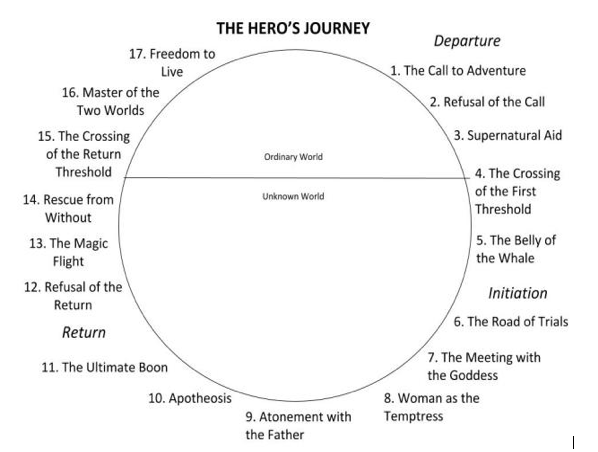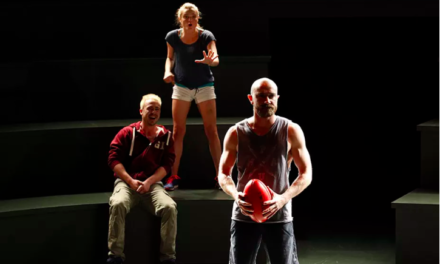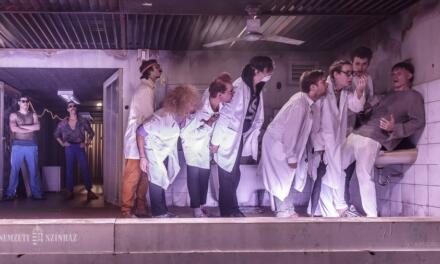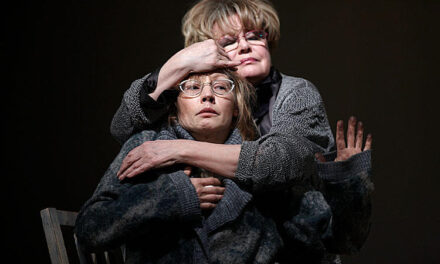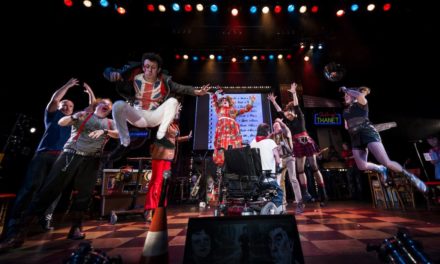Adaptation became one of my “things” academically sometime in the early 2000s. I was and still am delighted with the versatility of this academic field and it’s become one of my go-to tools, together with dramaturgy (an umbrella for the ethnographic- semiotic-phenomenological-contextual “method” I use to think things through – I could also call it my “unleashing the scatterbrain” approach). Adaptation gets rid of restrictions, categories and disciplinary thresholds by connecting media and texts through examining their relationship with each other.
A change to suit the environment
When teaching adaptation, I often ask students to think of an occasion where they adapted to something – the transition from school to university, the behavioral adaptation made in response to family or fellow students. How did they adapt their body, voice or face in order to be seen how they wanted to be seen?
But “how” is not the most important question when considering adaptation. If we put all our focus simply on how the source has been changed, we stop short of being able to place the adaptation in a specific and interesting context; instead, we need to use comparative findings to work out what particular changes were for – how the medium, market, audience, period, language (I could go on!) influenced the adaptation process. This takes us out of dull thinking around “the essence of the original” and the dreaded “faithful” (known as “the F word” in adaptation studies) and towards the more interesting “what’s it for?”
Comparing biological and cultural processes of adaptation is also fascinating: in order to keep optimizing an organism, biological adaptation takes us further and further away from the “original,” if there ever was one; cultural adaptation, however, always relates back to the perceived original.
For example, the recently broadcast Jane Eyre from the National Theatre has a close relationship with Charlotte Brontë’s novel, as well as some kind of relationship with previous adaptations for stage, prose, television and film. If we ask “what was it adapted for?” and see the beautiful “voicing” of Bertha (Brontë’s “madwoman in the attic”) through music, we realize that Jean Rhys’s Wide Sargasso Sea (1966), a retrospective prequel to Jane Eyre, must have played a part in the adaptation process. Sally Cookson and her ensemble’s devised production therefore exists in a creative tension between the “original” and Wide Sargasso Sea – which, while also an “original” in its own right, is nonetheless an adaptation of Brontë’s novel. Cookson’s production gives a voice to a dramatically convenient, monstrous stereotype, and humanizes a character in the process, just as Rhys had done for Antoinette Cosway.
Biological adaptation works chronologically; cultural adaptation works laterally. So where does that leave behavioral adaptation? It lacks the clarity of “source” and “adaptation,” as well as the finite result (of having an improved beak if you are a finch, or a Jane Eyre for our times if you are an adaptor and/or director).
I suppose we can think about it by pondering on the dramaturgy of the COVID-19 crisis, and – more specifically – on the dramaturgy of lockdown. I was inspired to do this by a German child psychotherapist, Dr. med. Oliver Dierssen, who was doing some interesting thinking via Twitter, using myth theory and narratology. (The thread is in German, so I am summarizing it here).
Dierssen argues that, when facing a crisis, we construct an “inner script” in order to navigate our way through. There is a complex relationship between instinct and information at work – and information is adapted to instinctive behavioral responses, such as bulk-buying, dramatizing, dismissing and satirizing the crisis, as well as overcompensation (the “productivity porn” which has caused some eye-rolling). In order to navigate our way through a new, unprecedented reality, we seek structure from familiar narratives, such as fairy tales and myths, i.e. most dramatized narratives we encounter.
The primal myth, the heroine’s quest, is still the foundation of most adaptations, consciously or subconsciously (Dierssen uses the generic masculine, so I am using the generic feminine here). Once the heroine has realized that she must leave her “old world,” often through the intervention of a mentor, she descends to the underworld (or an unprecedented pandemic-stricken world), with challenges coming at her from all sides. Quests build up to a life-or-death situation, a battle, a narrative climax. In parallel, a personal transformation takes place, with the heroine overcoming her own restrictions and shortcomings. When this narrative climax occurs, we know that we’re in Act 4, so to speak, and that redemption and resolution are within reach. The heroine makes a victorious return to the old world, which is freed or improved thanks to her intervention. Dierssen warns against applying this happy ending of our internalized myths to the loosening of lockdown: our subconscious expectation that “the battle has been won” is a treacherous one. We need hope, but we also need the stamina for getting through the next episodes in our heroine’s quest.
Which dramaturgical model provides a script more suitable for navigating us through the COVID-19 crisis, then? I am reminded that we use dramaturgy as a tool to give us structure and to maintain hope, and it is my hope for times to come that, while we’re not in a finite five-act structure, we also won’t be stuck in the dramaturgy of episodes that seem to run forever. Either way, there’s a lot of adaptation required of us as we continue on our quest.
NB 1: Sarah Cardwell explains the biological and cultural processes of adaptation so much better than I can do in the introduction to her 2002 book Adaptation Revisited (Manchester University Press).
NB 2: Dierssen’s Twitter thread applies to the situation in Germany, and brilliantly casts leading virologist Prof. Christian Drosten in the role of advisor and wise mentor! Drosten’s podcast for broadcaster NDR has been a compass of knowledge and education for many, and I recommend it to you.
Dr. Kara McKechnie is a German-Scottish hybrid. Born in London and educated in Germany, she worked for Opera Stuttgart, Opera Karlsruhe, Heidelberg Theatre et al. Her academic career started at Heidelberg University and continued at De Montfort University (Ph.D. thesis on Alan Bennett; monograph 2007). She has worked as a Lecturer in Dramaturgy at Bretton Hall, then the University of Leeds, since 2000 and teaches and supervises for the Schools of Performance & Cultural Industries and the Schools of Music. She has worked with Opera North and Leeds Playhouse on many projects, has published a monograph on Opera North (2014) and regularly collaborates with opera director Alessandro Talevi in the UK and Italy. Kara is resident dramaturg for Slung Low (Leeds), funded by the Gulbenkian Foundation. Slung Low has “repurposed” as a hub for food bank referrals. Their short film, The Good Book, is released online on 1 May 2020.
This blog entry appeared on the Blog of the Dramaturgs’ Network on 26 April 2020, as part of the Invisible Diaries series, and has been reposted with permission.
This post was written by the author in their personal capacity.The opinions expressed in this article are the author’s own and do not reflect the view of The Theatre Times, their staff or collaborators.
This post was written by Kara McKechnie.
The views expressed here belong to the author and do not necessarily reflect our views and opinions.

